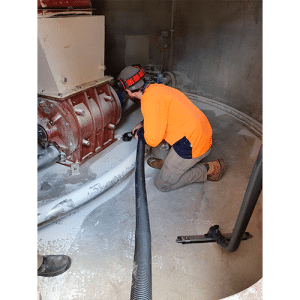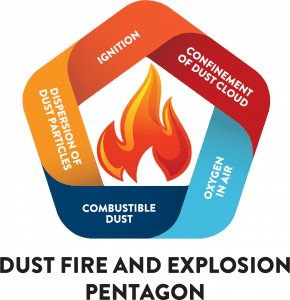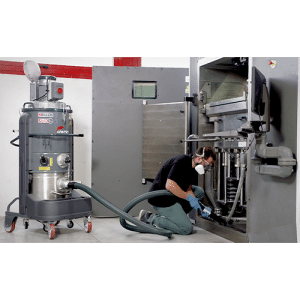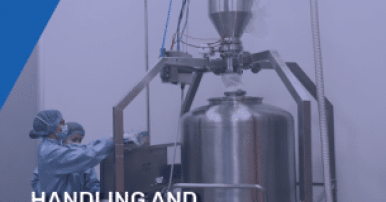Combustible dust is widely known as a serious hazard for a vast number of industries. Thankfully, there are organizations in place that assist these industries with combustible dust education and the enforcement of explosion prevention measures. The Occupational Safety and Health Administration (OSHA) and the National Fire Protection Association (NFPA) are two of the primary organizations devoted to promoting safe operation under the risk of combustible dust.
At Delfin, we provide combustible dust solutions via certified equipment for partners from around the globe. Thanks to information gathered from OSHA and NFPA, we’ve compiled a list of pertinent questions and answers to help you better understand all-things combustible dust.
What makes dust combustible?
The dust itself does not hold some special quality that makes it combustible. Rather, any ignitable material (food, chemicals, plastics, etc.) when in powdered form and suspended in the air poses a risk of combustion or explosion.
This fact may be surprising to new employers or workers who may associate combustion solely with materials like coal or sulfur. But do a brief search on the history of this danger and you’ll find there are many tragic stories of combustible dust accidents that occurred due to everyday materials that are in powder form.
How do I know if the dust is combustible?
One surefire way to tell if your dust is combustible is by browsing relevant charts or in-house industry resources. Your corporate handbook may have information on the material involved in your production process. Typically, there would be an SDS (Safety Data Sheet) on hand with your safety department that outlines the risks associated with and the proper handling of such a material.
That said, the simple truth is that there are few materials out there that aren’t combustible once ground or screened into powder. Often, the very nature of suspended, fine particles makes them vulnerable to an explosion.
What manufacturing industries produce combustible dust?
There are a vast number of different industries that produce combustible dust. Typically, these industries incorporate the following into their production process:
- Agricultural products
- Metal dust
- Plastic dust
- Chemical dust
- Carbonaceous dust (wood, charcoal, cellulose)
Food and pharmaceutical manufacturing and chemical processing plants are among the highest-risk industries. In early 2021, a fatal blast in Singapore killed three people and injured several others – this explosion came as the result of potato starch powder used in the process.

How do dust explosions occur?
Dust explosions can occur for several reasons – static from machines, for example, could ignite the material at a simple flip of a switch. Any time there is neglected or otherwise ignored combustible dust suspended in the air—and anti-static, certified products are not in play—there is a great risk of combustion.
OSHA uses what they call an “explosion pentagon” to describe the factors that come together and cause dust-related explosions. These five factors (like the five points of a pentagon) include:
- Fuel – in this case, combustible dust
- Heat – an ignition source like machine static
- Oxidizer – or oxygen in the air
- Dispersion – the introduction of combustible dust in significant quantities to the air
- Confinement – the suspended particles having nowhere to go
If we think of the principal of a vacuum, it is designed to collect a fuel (dust) and mix it with Oxygen within a confined space. So it is critical that only certified systems that are specifically tested for handling combustible dust be used to clean in a way that ensures there is no heat source available (like static, electric or percussion arching) to ignite the dust.

How can I reduce combustible dust risks?
There are vital measures you should take to help mitigate the risks associated with combustible dust. To start, your facility should have an adequate housekeeping program in place that ensures dust collection and containment systems are active where combustible dust may be present.
You should also frequently clean surfaces to avoid dust accumulation, and use certain electronic devices that are approved for use in Class II facilities – including certified industrial vacuum cleaners, dust collection systems, and pneumatic conveyors. Additionally, machinery that emits dust must be grounded to help prevent the accumulation of static charges.
Don’t just take our word for it, however. Always lean on funded regulatory programs or expert instruction. If you’re not sure how or where to begin, OSHA has a plethora of helpful, educational resources available to workers and employers alike.
Delfin – Combustible Dust Vacuums for Your Industry
From convenient, lightweight and portable vacuum cleaners and continuous use dust collectors, Delfin has a wide range of products that will meet your industry demands. We also supply and install centralized vacuum systems for processes that demand multiple extraction points and careful upkeep measures.
We pride ourselves on the partnerships we’ve built throughout our 30 years of service. Call us today or reach out online to learn how we can help your operation.






